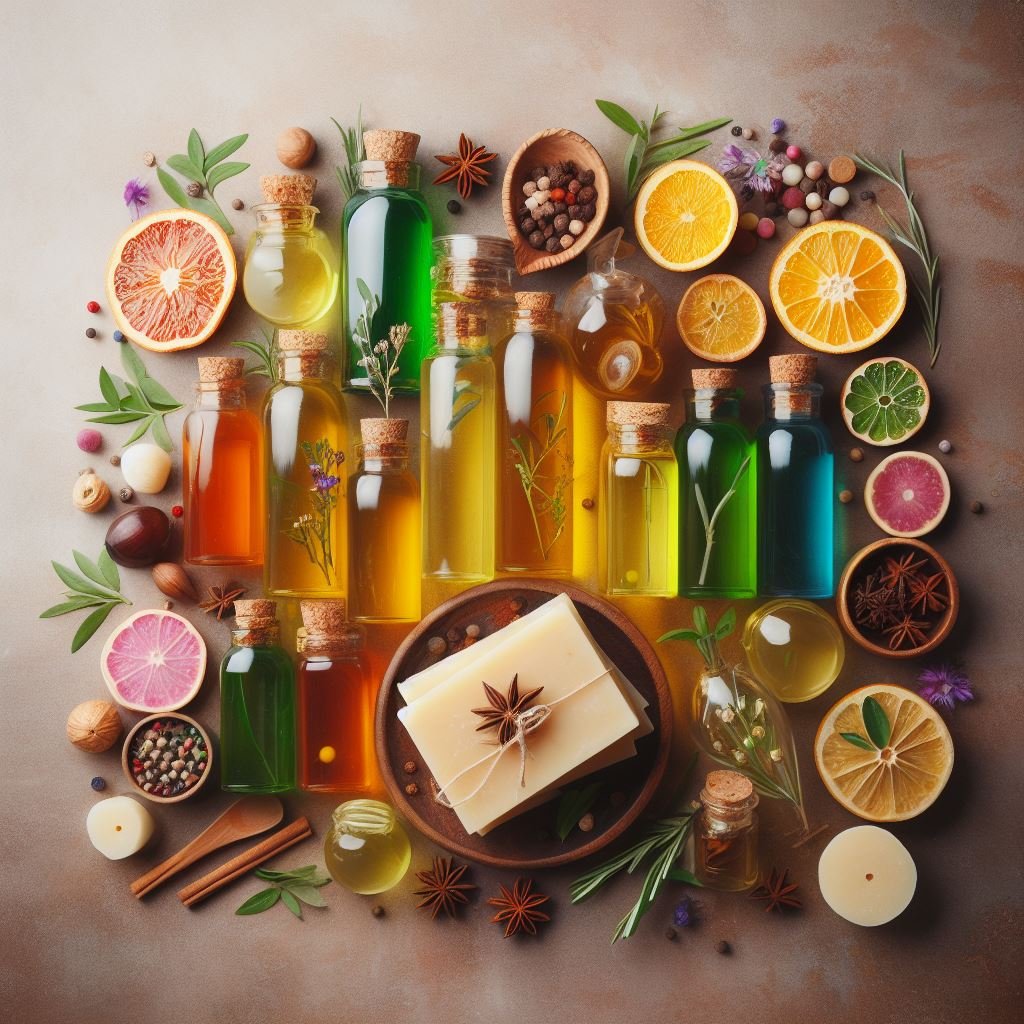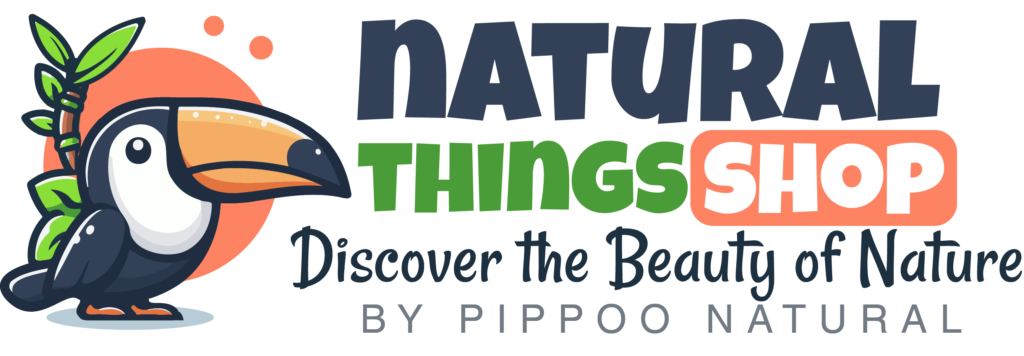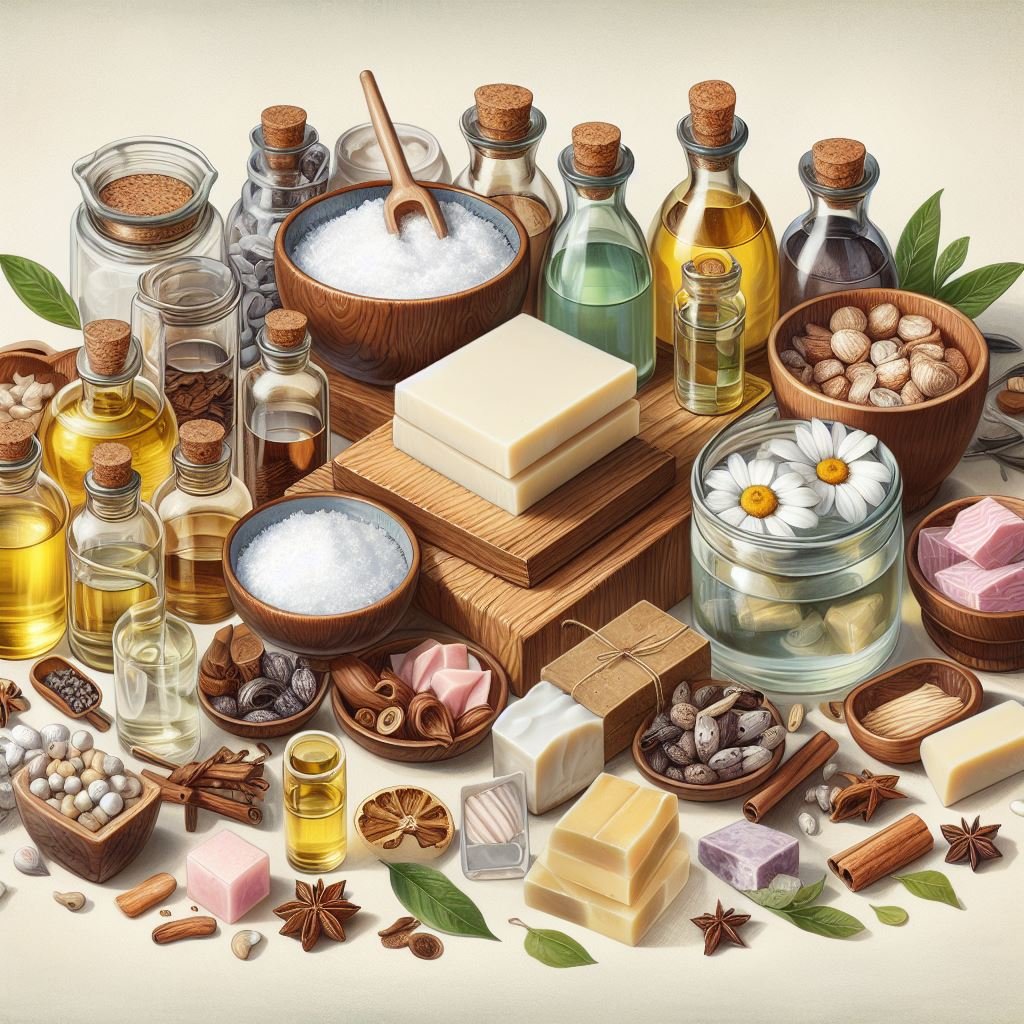INGREDIENTS FOR SOAPMAKING
It’s important to understand your ingredients for natural soapmaking before you start. Every fat, base carrier oils, natural additives, and essential oils, natural colorants brings something different to a soap recipe. The type of vitamins and amount of glycerin that is released in order to nourish our skin or hair varies and is based on the ingredients.
Lye:
Lye is necessary to turn the oil mixture into a soap. The lye used in each of the recipes in this book is sodium hydroxide (NaOH), not potassium hydroxide (KOH), which makes a much softer soap.
We recommend buying sodium hydroxide specifically formulated for soapmaking to ensure that it is filtered, with no debris. We once bought lye that had small pebbles in it and a mysterious purple dye that did not show up until the lye was poured into the water. You can find lye at your local hardware store in the plumbing section as well. Just make sure it is 100 percent sodium hydroxide beads or crystals (not liquid), with no other additives.
Working with Lye
The best way to work with lye is to not touch it directly. Always wear gloves, safety glasses, and a long-sleeve shirt so that it doesn’t make contact with your skin or hurt your eyes. Always go outside, even during winter months, and wear a mask when pouring the lye crystals into the bowl of water, because it will give off a toxic gas for about a minute. After that it is safe to take inside.
If you accidently get a little lye on your skin while stirring, you will not feel it immediately. You’ll feel an itch a minute or two later as it starts to burn your skin. Wash the area with soap and water immediately. Remember, once the saponification process is finished, molecularly no lye will remain in your soap. Until then, treat it with the proper safety precautions.
Water
Water is used in a soap recipe to dissolve the lye crystals so that they are prepped and ready to react with the oil molecules during saponification. Water also helps control the rate at which the recipe comes to trace or thickens. The standard amount of water used in a recipe is calculated at the rate of 30 to 38 percent of the oils.
Base Carrier Oils
Every recipe is built around a set of base carrier oils. These can be composed of animal fats, vegetable oils, or waxes. The oils chosen for a recipe are very important. Each oil is made up of a different combination of fatty acids, vitamins, minerals, and antioxidants.
Some oils help create a long-lasting hard bar, while others bring the cleansing properties that we all want in soap. Oils can determine whether you have large or small bubbles, and whether your soap is conditioning to the skin.
For now, understand that soap recipes usually have at least three different types of fats or oils because they come together to give the soap the nourishing properties desired. On the other hand, a laundry soap bar will have only one or two oils because the primary purpose of a laundry bar clothes, not add oils or make giant bubbles.
What about using animal fats? For those of us who raise and eat animals, being able to use all parts of the animal, even the fat, is a bonus. No one wants to be wasteful. Fats from healthy, grass-fed animals make for an extremely nourishing, hard bar. I am definitely partial to a good soap bar with tallow. At the same time, I understand and respect those who do not want to use animal fats in soap. I’ve created a huge variety of recipes to choose from, enough for anyone to find a favorite go-to recipe to build off and be creative.
Some examples of fats, butters, and oils you will find in this book are olive, coconut, castor, grapeseed, avocado, and sweet almond oils; shea butter, cocoa butter; tallow, and lard. These days you can find a lot of these oils in grocery stores and specialty food stores. Sometimes you need to look around and do some research to determine whether they are the high quality that you need. You can also find them online in stores like Amazon.com, Bulk Apothecary, Etsy, Mountain Rose Herbs, Starwest Botanicals, Soaper’s Choice, and Thrive Market. Some of these oils can also be purchased in local vitamin shops if you don’t want to shop online.

BASE CARRIER OILS
For more information about base carrier oils for soap making, read our article
Click more informationNatural Additives
Once you have lye, water, and base oils, you really could stop there. But I expect one of the reasons you want to make your own soaps is so that you can create high-quality, nourishing bars that look and smell wonderful! That’s where natural additives come in.
Natural additives can be used for exfoliation, such as oats, coffee grounds, salt, or loofahs. Others add nourishment to the skin through antioxidants and vitamins, or moisturizing properties through ingredients like honey, avocado, goat milk, coconut milk, activated charcoal powder, aloe, and clay. Honey also adds to the bubbliness of a soap bar.
Herbs can also be added for exfoliation and nutritive properties. I like to use peppermint leaves and various teas like comfrey, chamomile, and green tea. The tea water, leaves, or both can be used. Rose petals, lavender, and calendula flowers are beautiful on top of soaps, making pretty decorative bars. When it comes to herbs and soap, the options are endless.
Natural Colorants
Embrace Nature’s Palette: Natural Colorants for Your Homemade Soap
In the realm of soap making, creativity knows no bounds, and the choice of colorants can truly transform your soap creations into works of art. While synthetic dyes offer a wide range of vibrant hues, opting for natural colorants introduces a touch of authenticity and eco-consciousness to your handcrafted soaps.
Natural colorants derived from plants, minerals, and spices offer a spectrum of colors that are not only visually appealing but also add subtle benefits to your soap bars. From the vibrant yellow of turmeric to the earthy brown of cocoa powder, natural pigments impart a unique character to your soaps while nourishing and revitalizing your skin.
Explore the vast array of natural colorants available and unleash your creativity with swirling, layering, and marbling techniques to create soaps that are not only beautiful but also gentle on your skin. Let nature’s palette inspire you as you craft soaps that are a true reflection of your passion for handcrafting.
Going to all the trouble to make a healthy soap bar with nourishing oils and then ruining it with food colorings and other unhealthy dyes seems like a big waste of time and resources. I’m very happy to say that natural soapmakers have beautiful rich tones to choose from.
Black and gray can be made with activated charcoal and brown from coffee and cocoa powder. Green can be made with spirulina, comfrey leaf, and parsley leaf. Orange comes from annatto, pumpkin purée, and clays. Pink and red come from rose clay and madder root. Yellow comes from annatto and turmeric. Blue can be made with woad and indigo. It’s a whole rainbow of colors!
These clays, powders, seeds, or leaves are either added to the lye water, added at trace, or added to the oils through an oil infusion that is made ahead of time.
Most of these natural colorants can be found easily online, and coffee, teas, and cocoa powder may be found in your local grocery store as well. Some ingredients are easy to find one year and harder the next, depending on supply and demand. Woad is one of those ingredients, though it can be substituted, with changes to your recipes, with indigo, which I like to purchase from Starwest Botanicals for purity. Other natural colorant herbs, seeds, and clays can be found at Mountain Rose Herbs, Etsy, and Amazon.com.

NATURAL ADDITIVES AND NATURAL COLORANTS
For more information about natural additives and natural colorants for soap making, read our article
Click more informationEssential Oils and Natural Resins
Essential oils and natural resins are used to impart a natural scent to soaps, as well as unique nutritive properties. Only use essential oils that are third-party tested and approved. Other labels such as pure, therapeutic, and natural are not regulated. Those claims may or may not be true.
There are over 100 essential oils that you may recognize. You probably don’t have reason to stock that many in your cupboard, though. The aim was to keep the oils used in these recipes to a manageable list, ranging from woody, floral and to citrus, fresh and green. Some of the essential oils you will see are lavender, orange, cedarwood, lemongrass, cinnamon, frankincense, rosemary, grapefruit, geranium, patchouli, ylang-ylang, peppermint, and tea tree. Many of these can be found in supplement and vitamin stores or pharmacies, but for the most variety look online at Mountain Rose Herbs, Starwest Botanicals, or do Terra.

ESSENTIAL OILS
For more information about essential oils for soap making, read our article
Click more informationSources / References
Natural Things Shop uses only high-quality sources to support the facts in our articles. Read our editorial process to learn more about how we fact-check our content and keep it accurate, trustworthy and reliable.
All the images we use on our site are produced with Dall-e 3 artificial intelligence technology. There are no legal problems regarding copyright.
Kelly Cable
- The Natural Soapmaking Book For Beginners
- DIY Soaps: Using All-Natural Herbs, Spices & Essential Oils


